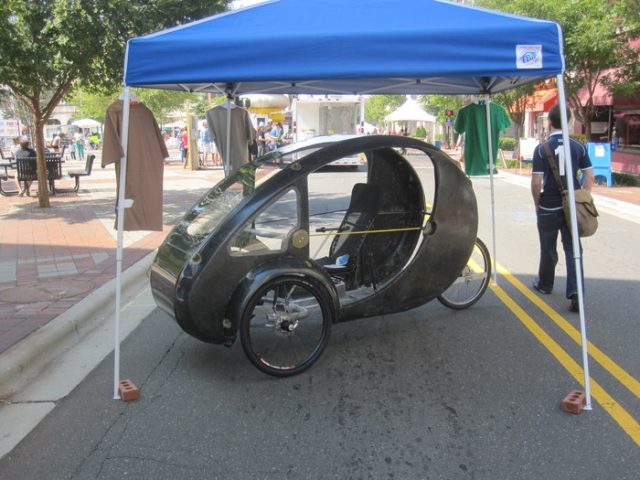A new Kickstarter project proposes to fill in the missing link between bicycle and environmentally conscious car: a “three-wheeled electric assist velomobile†that runs off rooftop solar panels, a top-off from a wall outlet, or the power of your own two feet. The vehicle is still classified as a bike in all 50 states and can go 1,800 miles off the energy equivalent of one gallon of gas.
The ELF, created by Organic Transit of Durham, NC, claims to solve many of the problems that affect our choice about which vehicle to take out for short trips. Bikes are efficient and environmentally friendly, but they leave you sweaty and storageless. Cars are comfortable, effortless, and you can fill them up with groceries, backpacks, and gym bags… at the cost of your personal contribution to climate change. The ELF navigates neatly around these tradeoffs as a single-seat podlike vehicle with an electric motor that can both assist you when pedaling or take over powering the vehicle completely, with a range of up to 30 miles (Organic Transit doesn’t specify the motor’s top speed).
Behind the seat, the ELF has room in the back for “eight bags of groceries or 350lbs of cargo,†according to the Kickstarter page. A 60 watt solar panel on the roof comes standard to charge the 88.8-volt lithium battery, though that aspect of the vehicle can be upgraded. The ELF also comes with built-in headlights, brake lights, and turn signals, so riders don’t have to signal by waving their arms out the door.
Read 1 remaining paragraphs | Comments

from Ars Technica
![]()







